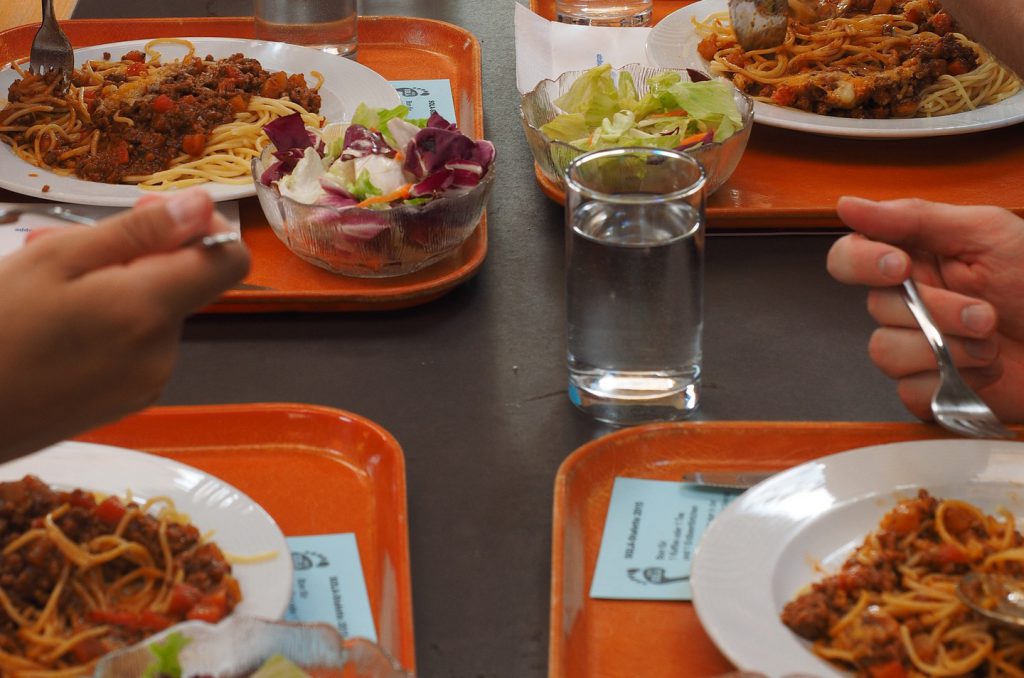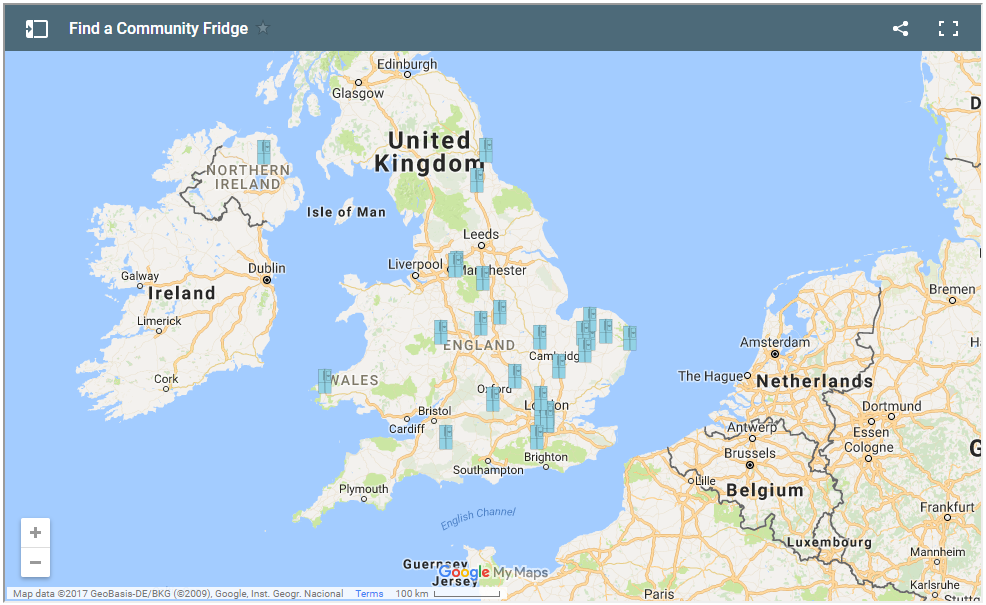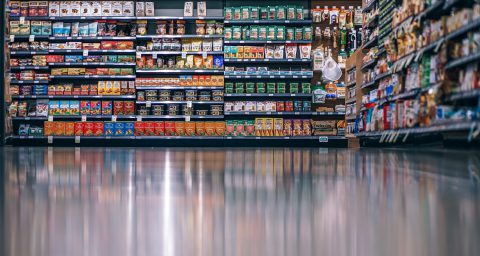
Carolin Reiner and Toby Park from the Behavioural Insights Team discuss the real cost of food waste in the UK. Carolin focusses on consumers, energy, and sustainability, and Toby leads on the team’s energy and sustainability work.
With Christmas around the corner, many of us in the UK find ourselves frantically purchasing vast amounts of food. Turkeys, Christmas puddings, mince pies – all must-haves for Christmas day. Unilever estimated that during Christmas, on average, 263,000 turkeys, 740,000 slices of Christmas pudding and 7.5 million mince pies go to waste in the UK (ref 1).
These are huge numbers. But we know simply telling people how much of their food will end up going to waste is unlikely to change our buying habits.
Most of us don’t intend to waste food, yet we still do it almost every day. Nor do we seem to be learning from our mistakes. In 2016, household food waste accounted for approximately 70% of the UK’s total food waste. On average, every household in the UK throws away £470 worth of food per year (ref 2). Reducing food waste would not only save us money on groceries, but taxes spent on waste management too.
On a global scale, it is estimated that if food loss and waste were a country, it would be the third biggest emitter of greenhouse gases (ref 3).
What factors contribute to food waste?
There are a number of structural, as well as behavioural, factors at play here. Many items that historically have been sold loose are now only available in packages, many of which can be too large for the average household. Coupled with aggressive pricing schemes, bulk-buying is often financially sensible – but also creates waste. Additionally, small ‘hassle factors’, like the extra effort required to bag your own loose produce disproportionately influences our behaviour. Why bag, cut and wash your own salad if you can just grab a salad bag?
Misinformation also has a role to play. Much fresh produce goes to waste due to widespread confusion between ‘best before’, ‘display until’ and ‘use by’ dates, leading consumers to toss out food unnecessarily after the ‘best before’ date.
Beyond these structural factors, cognitive biases also have a significant impact on our consumption decisions. We often struggle to plan for future needs, such as accurately estimating the number of meals we will eat at home over the coming week and underestimate the cumulative magnitude of many small actions, for example, the sum of small leftovers we throw out every day.

Design the waste out
The ways food is presented and retail environments are designed can have a big impact. A review by The World Resources Institute points towards evidence that suggests removing trays from university canteens can reduce food waste on average by 25-30% (ref 4).
Why? The hassle of getting up twice to pick up items you aren’t able to carry at first makes people purchase less, especially considering you might already be full by the time you consume your second round. It’s an example of how little frictions and hassle can make a big difference on your behaviour – and in this case, consumption.
This idea of friction could be applied to packaging in supermarkets. Removing plastic and cardboard for products that provides little benefit for shelf-life would demand more effort and engagement from the consumer when bagging food. Likewise, for products like chicken legs or sliced bread, packaging could be designed to prompt freezing and resealing through handy design and messages on the packaging.
‘Best before’ today. This means it’s still good tomorrow.
But over-purchasing is only one side of the story. It is estimated that around 60% of all food wasted in the UK could be consumed (ref 5). How can we encourage people to use, rather than toss, this perfectly good food?
Overcoming the confusion between ‘best before’, ‘display until’ and ‘use-by’ dates is one solution. Rigorous evaluation could help identify alternative and more effective labelling that is easier to understand. Another option would be to employ simple rules of thumb as to when you know if fresh produce like salad, fruits and eggs has turned bad.
Historically Britons have been very good at conserving and reusing food in the UK, thinking about common practices like pickling or bottling of vegetables. But these cultural norms have been eroded over time. Helping reinstate this knowledge and interest holds promise.
Healthy and sustainable food choices
While we toss good food unnecessarily, we also tend to eat more than we need, especially during Christmas. But over-consumption isn’t just a seasonal problem – it’s a form of food and resource waste with impacts on individual health and the environment (ref 6). It is estimated that national greenhouse gas emissions could be reduced by 17% if the average UK diet aligns with the WHO’s nutrition recommendations (ref 7).
One study found that on average food purchasing decisions take only about half a second (ref 8). In other words, we shop mindlessly, and this leaves us susceptible to psychological biases and to the influence of the environment around us, like the layout of shops, canteens and restaurant menus – typically designed for profit. But why not harness our tendency to make food purchases on ‘auto-pilot’ in positive ways, such as to promote more healthy and sustainable consumption habits?
A study examining ways to reduce the consumption of sugary drinks, for example, found that the sales of bottled water in a canteen setting significantly increased when the bottles had been moved from a hard-to-reach area to fridges in the middle of the canteen (ref 9). Similarly, in supermarkets, removing sweets from check-out areas is an often-cited example of a classic ‘nudge’.
We might also want to promote more considered purchases, and in doing this, should take into account how people really respond to information. ‘Sugar alerts’ that look like stop-signs, for instance, are more disruptive than complex nutrition tables. In one of our own studies, we found that they reduced purchases of high-sugar drinks by 7.3% (ref 10).
Christmas, a time for giving
While reducing all forms of household waste is important, especially when people mistakenly over-purchase and throw out good food, there will always be instances where people have edible food they might not want or need anymore. That’s why we should make food donations easier and enable a secondary market where food items passed their ‘best before’ dates can be resold more cheaply.

This would likely require regulatory reform, but in the form of deregulation: for example, making donations easy, such as with the innovative community fridges, currently being trialled by Hubbub (ref 11). East of England Co-op is also leading by example in this space, having recently started to sell dried products like pasta or rice and tins for 10p per item once past their ‘best before’ date (ref 12).
Christmas may be a time for indulgence, but it is also a time for giving, and so a timely moment to harness the salience of the issue and encourage a change in behaviour.
References
- Unilever: 74 million mince pies thrown away every Christmas
- Love Food Hate Waste: What’s in it for me
- House of Commons: The Environment, Food and Rural Affairs Committee, Food Waste in England (PDF)
- Lipinski, B., Hanson, C., Lomax, J., Kitinoja, L., Waite, R., & Searchinger, T. (2013). Reducing food loss and waste. World Resources Institute Working Paper.
- WRAP: Courtauld Commitment 3: Delivering action on waste
- Global Food Security. (2016). Overconsumption and influences on diet. Insight. Issue 6, August 16.
- Milner, J., Green, R., Dangour, A. D., Haines, A., Chalabi, Z., Spadaro, J., … & Wilkinson, P. (2015). Health effects of adopting low greenhouse gas emission diets in the UK. BMJ open, 5(4), e007364.
- Thomas, M., Desai, K. K., & Seenivasan, S. (2011). How credit card payments increase unhealthy food purchases: Visceral regulation of vices. Journal of Consumer Research, 38(1), 126-139.
- Thorndike, A. N., Sonnenberg, L., Riis, J., Barraclough, S., & Levy, D. E. (2012). A 2-phase labelling and choice architecture intervention to improve healthy food and beverage choices. American Journal of Public Health, 102(3), 527-533.
- The Behavioural Insights Team: Update report 2016-17 (PDF)
- Hubbub Foundation: Be a part of the Community Fridge Network
- BBC News: Co-op sells food after ‘best before’ dates in waste crackdown




2 thoughts on “A case for turkey sandwiches and other food for thought on Christmas”
Comments are closed.